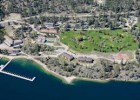Focus Group on Rural Development – SIBAC
 On Thursday December 14 2017 I attend a meeting with Board Members from our SIBAC (Southern Interior Beetle Action Coalition) Group, Ministry if Forest and Provincial Representatives for Rural Communities. The purpose of this meeting was to discuss the priority actions that the BC Rural Centre believes the Provincial Government should undertake to facilitate rural development in the province.
On Thursday December 14 2017 I attend a meeting with Board Members from our SIBAC (Southern Interior Beetle Action Coalition) Group, Ministry if Forest and Provincial Representatives for Rural Communities. The purpose of this meeting was to discuss the priority actions that the BC Rural Centre believes the Provincial Government should undertake to facilitate rural development in the province.
Better access for Rural and First Nations Communities to Funding and Government Programs is our organizational goal. Specific issues were Schools and Health Centers within our community, operating costs & filtration regulations for the small community (less than 5000 connections) & rural water systems, rural and home based economic development and broadband connectivity were the issues I brought to the group for consideration.
RECOMMENDATIONS FOR PROVINCIAL GOVERNMENT ACTION TO STIMULATE RURAL DEVELOPMENT
INTRODUCTION
The BC Rural Centre believes passionately in the future of BC’s rural BC communities and regions. When the BC Rural Centre uses the term rural communities we mean ALL rural communities – rural First Nation communities, rural municipalities and unincorporated rural communities.
We know that the actions of the Provincial Government have an extremely significant impact on rural development and rural communities. The purpose of this paper is to present the priority actions that the BC Rural Centre believes the Provincial Government should undertake to facilitate rural development in the province.
These recommendations are based on the results of extensive rural development research completed by the BC Rural Centre/Southern Interior Beetle Action Coalition and various other organizations over the past three decades.
UNDERSTANDING THE MAJOR CHALLENGES FACING BC’s RURAL COMMUNITIES
Rural BC is incredibly diverse and there are significant differences between some of BC’s rural regions and communities in terms of their current economic health. SIBAC and other organizations have published numerous reports identifying and quantifying long-term demographic and economic trends in rural BC communities. However, despite their individual differences many of BC’s rural communities share the common rural development challenges of:
Stagnant or declining populations
Significantly older community demographic profiles than the provincial average or urban communities
Older housing stock that is primarily single family detached homes
Significant job losses in the natural resource sectors
Loss of government offices, public services and private businesses
Slower rates of new business creation and/or expansion
Significant losses of industrial taxation revenue
Limited financial resources and development capacity
It is extremely important to recognize the interconnectedness and self-reinforcing nature of these rural challenges – and thus the need for a strategic, comprehensive and integrated rural development response.
KEY ELEMENTS OF SUCCESS IN RURAL DEVELOPMENT
The rural challenges noted above are not unique to BC or even to Canada and are in fact shared by most western industrialized countries. Several jurisdictions have developed innovative and successful initiatives to help facilitate rural development. Much of SIBAC’s research has focussed on identifying the key elements of successful rural development and rural economic revitalization. These include:
A recognition of the important differences between Community Economic Development, Regional Economic Development, Economic Sector Development and Rural Development strategies and approaches;
A recognition of the need to actively and continuously consult and involve rural residents in the development of rural development policies;
A recognition that rural development challenges cannot be solved by a simple “project funding” approach – but instead requires a long-term investment approach;
The development and implementation of a strategic, holistic and long-term senior government approach to – and supports for – rural development;
A recognition of the need to build rural development capacity while simultaneously providing new rural development tools and resources that will allow rural communities to respond quickly to new opportunities and emerging issues;
Creating new forms of rural investment funds and business & entrepreneurial development supports; and
A recognition of the critical and vital role that Non-Governmental Rural Development Organizations play in facilitating rural development.
MAJOR PROVINCIAL GOVERNMENT INFLUENCE POINTS FOR RURAL DEVELOPMENT
There are a wide variety of provincial government actions and policies that will ultimately affect rural development and rural communities. The following diagram identifies just some of the major ways the provincial government influences rural development and the quality of life in rural communities.
Figure 1: Major Ways Government Can Influence Rural Development
RECOMMENDATIONS FOR PRIORITY PROVINCIAL GOVERNMENT ACTIONS TO FACILITATE RURAL DEVELOPMENT
Based on all of the above, the BC Rural Centre would suggest that the provincial government should prioritize several actions to help facilitate rural development in the province:
1.) Develop & Implement a Provincial Rural Development Strategy. Effective rural development requires government action on a wide variety of issues that spans the mandates of many provincial ministries and agencies. A comprehensive and meaningful provincial rural development strategy can be very effective in ensuring that the policies and initiatives of all provincial ministries and agencies are effectively coordinated and aligned to support provincial rural development objectives and efforts. A comprehensive provincial rural development strategy should address all the major government influence points noted in Figure 1, but at a minimum, the BC Rural Centre believes that a provincial Rural Strategy should identify specific provincial goals, objectives and actions for rural development with regards to:
Climate Change
Forestry
Transportation
Energy Development
Health Care
Agriculture
Infrastructure
Procurement
Education
Tourism
Innovation
2.) Actively use a provincial rural advisory committee. As noted above, there is a need to continually and actively engage rural leaders, rural business owners and rural residents in designing and implementing rural development policies and initiatives. The BC Rural Centre believes that a provincial rural advisory committee can play a significant and important role in providing on-going advice and assistance to the provincial government on rural issues.
3.) Build the Capacity of Rural Communities. Most smaller rural communities and First Nations have limited financial and human resources that are already spread very thin. To accelerate rural development, there is a need to enhance the capacity of smaller rural communities. Research from other jurisdictions has demonstrated the critical role rural development NGOs play in facilitating rural development. Government programs and initiatives tend to change relatively frequently with changes in governments and government priorities. Rural development NGOs therefore are critical in providing the appropriate, consistent and long-term rural development support that rural communities require. Therefore, the BC Rural Centre recommends that the provincial government:
(i) Provide endowment-type operational funding to non-governmental rural development organization(s) (i.e. like the BC Rural Centre) to ensure that rural communities will have access to relevant rural development information, expertise and assistance in the long-term.
(ii) Provide programs & funding that would support rural development capacity building and rural development projects.
4.) Develop new forms of Revenue for Rural Communities & First Nations. To be truly sustainable in the long-term, rural communities require access to new permanent forms of revenue over which they have direct decision-making power. Unlike their growing urban counterparts, rural communities cannot replace dwindling industrial property taxes solely from increases in residential and commercial property taxes. Rural communities often provide the basic infrastructure and services that are required to support resource development on surrounding provincial crown lands. As recommended by the UBCM, the former BC Progress Board and other organizations; there is a need to develop new ways to create new ongoing revenue streams for rural communities. The BC Rural Centre believes these options should include:
(i) The creation of additional – and larger – Community Forest & First Nations Woodland tenures. The creation of new and larger Community Forest & First Nations Woodland tenures would also help achieve other provincial objectives such as interface wildfire hazard reduction, water quality protection and rural job creation.
(ii) The development of policies, programs and tools that will help rural communities and First Nations take increased ownership positions in new projects and businesses in their communities and surrounding regions/traditional territories (e.g. Green Energy developments).
(iii) The development of policies and programs that would transfer restricted ownership of some crown lands to rural communities and First Nations to stimulate rural economic development.
5.) Implement New Tools to Increase the Investment Funds available for Rural Business Development. Experience in other jurisdictions has demonstrated that increased access to business investment funding is critical to rural business development and rural economic revitalization. Specifically, the BC Rural Centre recommends that the provincial government:
(i) Work with community investment practitioners to create a BC equivalent of the highly successful Nova Scotia Community Economic Development Investment Fund (CEDIF) program.
(ii) Work with community investment practitioners to identify and implement regulatory and policy changes that would enhance the ability of rural communities’ to establish and operate community investment cooperatives and community Venture Capital Corporations.
SUMMARY
“But the overall trend is one of inter-regional divergence, lagging ‘peripheral’ areas, and intraprovincial asymmetries favouring the metropolitan regions, with attendant loss of development and employment opportunities (and evidently increasing social and political alienation) in much of British Columbia. If allowed to continue, this spatially ‘lopsided’ development trajectory in the province will be socially divisive and increasingly problematic from the perspective of community cohesion, unity and sense of shared purpose in BC as a whole. In the worst case scenario, future policy will be heavily oriented (or ‘skewed’) toward worsening problems of growth management and ‘livability’ in the metropolitan regions (and other examples cited), while endlessly engaged in episodes of ‘crisis management’ among many of the narrowly resource-dependent communities of the interior and periphery.”
From BC at the Crossroads: Report prepared for the Project 250: Regional Economies Expert Panel.
Thomas Hutton, July 2002, page 17
Many rural residents would argue that Professor Hutton’s findings still hold very true today. The challenges and issues facing rural BC communities are inherently complex and thus will require equally comprehensive, holistic and long-term solutions. The BC Rural Centre remains committed to developing and sharing rural revitalization success stories, tools and policy initiatives. For more information please visit: https://www.bcruralcentre.org/focus/rural-policy/ and
http://www.sibacs.com/rural-advocacy-activities/rural-bc-project-2/

